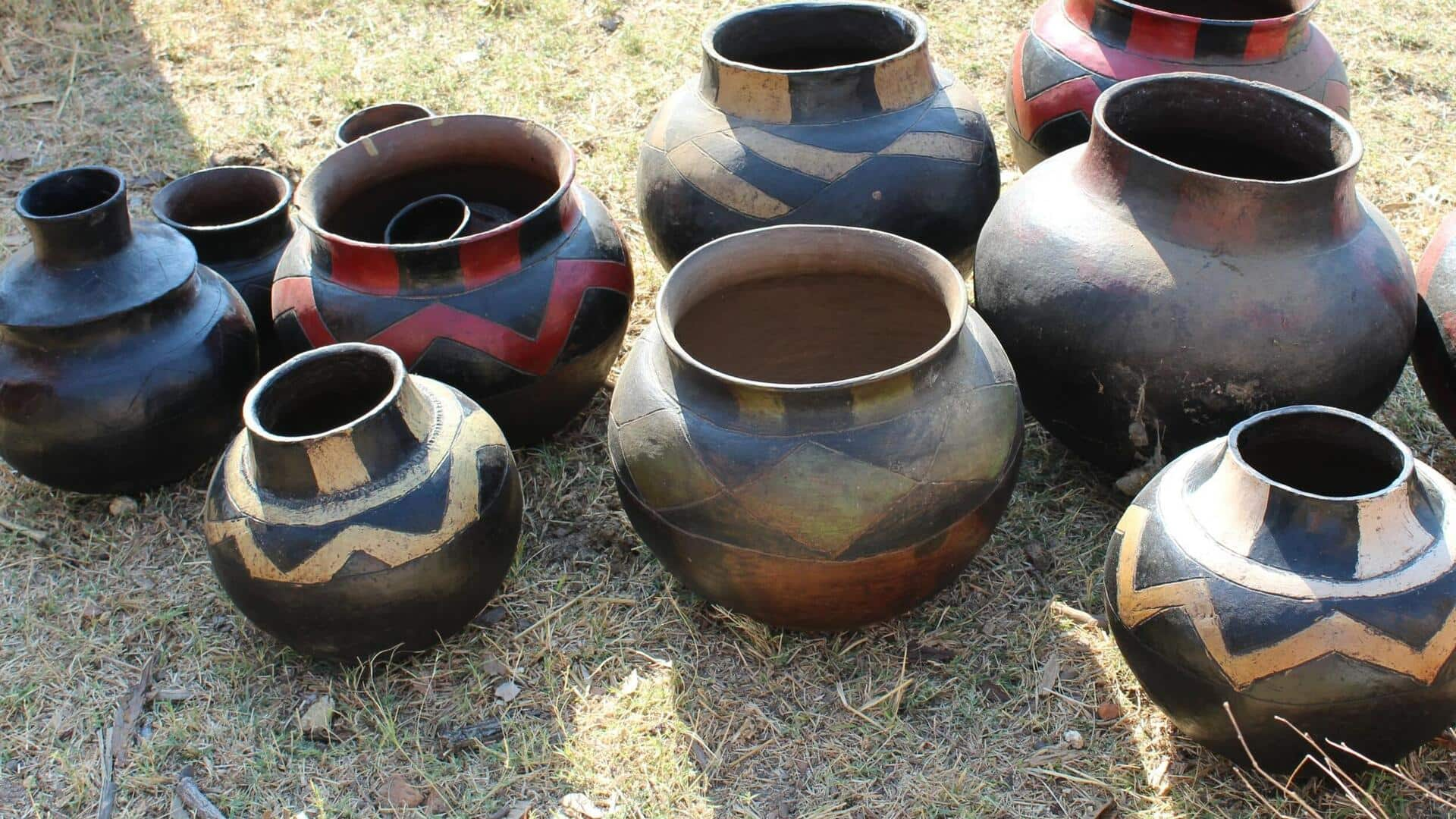
Shona pottery: Discovering the timeless craft of Zimbabwe's master potters
What's the story
Zimbabwean Shona pottery is an exquisite cultural heritage that has been handed down from one generation to another. Characterized by its distinctive techniques and elaborate designs, Shona pottery showcases the ingenuity and skill of the artisans. In this article, we explore five mesmerizing techniques involved in this age-old art, and how the same enhance the beauty and utility of the pottery pieces.
Coiling technique
Hand coiling mastery
Hand coiling is a primary technique in Shona pottery, where artisans create pots by stacking coils of clay atop each other. This method allows for the flexibility of shaping and size, enabling potters to easily craft both small and large vessels. The process requires a skillful manipulation of clay to ensure even thickness and stability, resulting in durable and aesthetically pleasing pieces.
Incising technique
Intricate incising patterns
Incising involves carving patterns into the surface of the clay before it is fired. This technique adds texture and visual interest to the pottery, often featuring geometric shapes or motifs inspired by nature. The precision required for incising demands a steady hand and an eye for detail, making it a respected skill among Shona potters.
Burnishing technique
Burnishing for smooth finish
Burnishing is a polishing process that lends Shona pottery its signature smooth finish. Artisans rub the surface of dried clay with stones or other hard objects until it shines. This technique not only beautifies the vessel but also strengthens it by compressing its surface particles. It makes it more resistant to water penetration.
Firing process
Traditional firing methods
Traditional firing methods are essential in converting raw clay into sturdy ceramic pieces. In Shona pottery, open-air firing is prevalent, where pots are kept in pits or on bare ground with flammable material like wood or grass heaped around them. The control of temperature during this process influences the color variations and strength of the final product.
Pigment application
Natural pigment decoration
Natural pigments made out of local minerals are used to decorate Shona pottery with vibrant colors after firing. These pigments are applied with brushes made of animal hair or plant fibers, enabling artisans to create intricate designs that enhance the uniqueness of each piece, without compromising its traditional essence.